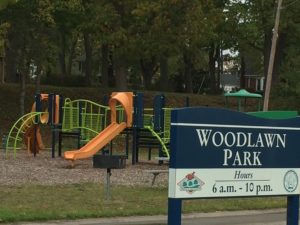By Megan Ockert
Support for a park system of 70 facilities, one of Flint’s design achievements going back to the 1920s, is the object of a Nov. 8 city-wide vote.
Next Tuesday Flint’s Park and Recreation millage is up for renewal after 10 years. As a .50 millage renewal, for a home valued at $50,000, the tax would be $25 per year. There is no increase or decrease. City of Flint planning staff state that, if passed, the renewal will continue to cost the average Flint homeowner about $4.61 a year, with the amount varying depending on the taxable value of the home.


Since 1996, the revenue brought in by the millage has steadily declined. Statistics from the Parks Department indicate that in the last seven years alone, millage revenue has decreased 60%, or $466,000.
Revenues from the millage help maintain a Flint parks system comprised of 1,881 acres and 70 recreational facilities, including Kearsley Park and the Flint River Trail, as well as 4 golf courses. The facilities also include 27 mini-parks/play lots, 14 neighborhood parks, 16 community parks, 5 large urban parks, 4 special use parks and trails — in total, more than an acre of green per 100 residents.
In late 2013 and following the adoption of the “Imagine Flint” master plan, what was long called Flint Parks & Recreation became a function of the Department of Planning & Development.
Park officials note Flint currently exceeds the National Recreation and Parks Association (NRPA) recommendation of 10 acres per 1,000 residents by over 90%. They state, “the Imagine Flint Master Plan calls for a strategic investment in its parks with priority placed on parks located in neighborhoods with a large number of children or adjacent to active schools or community centers.”
According to materials from the City of Flint, last year, 78 percent of the $314,000 available parks funding went to providing mowing services in parks, along with utilities such as maintaining park lights at Berston Field House, Haskell Community Center and The McKinley VISTA Center. The Parks Millage provides the only dedicated funding for these services.
Despite budget and staff constraints, city officials say they are continuing to pursue grant funding. City staff in the Planning Division are currently working on $2.6 million in grant funding projects and have completed $1.4 million in grant funded projects in 2015. In 2003, Flint employed 97 full time workers to care for their parks and recreational areas, a number that has dramatically decreased over the years. Currently, Flint has fewer than one full-time employee dedicated to parks.
According to a parks history provided in city planning materials, city planner John Nolen first laid out the Flint parks system in the 1920 City of Flint plan. Another key player instrumental in the development of the Flint parks system was J. Dallas Dort. Dort, a carriage maker and auto pioneer, created a parks board and provided financial support by donating land for parks. Due to Dort’s leadership, the City of Flint, adopted an ordinance to name the parks system “J. Dallas Dort Memorial Park Systems.”
For information about polling locations and hours, go to http://www.cityofflint.com or contact the election division of the city clerk’s office at 766-7414.
EVM staff writer Megan Ockert can be reached at ockertma@gmail.com.



You must be logged in to post a comment.